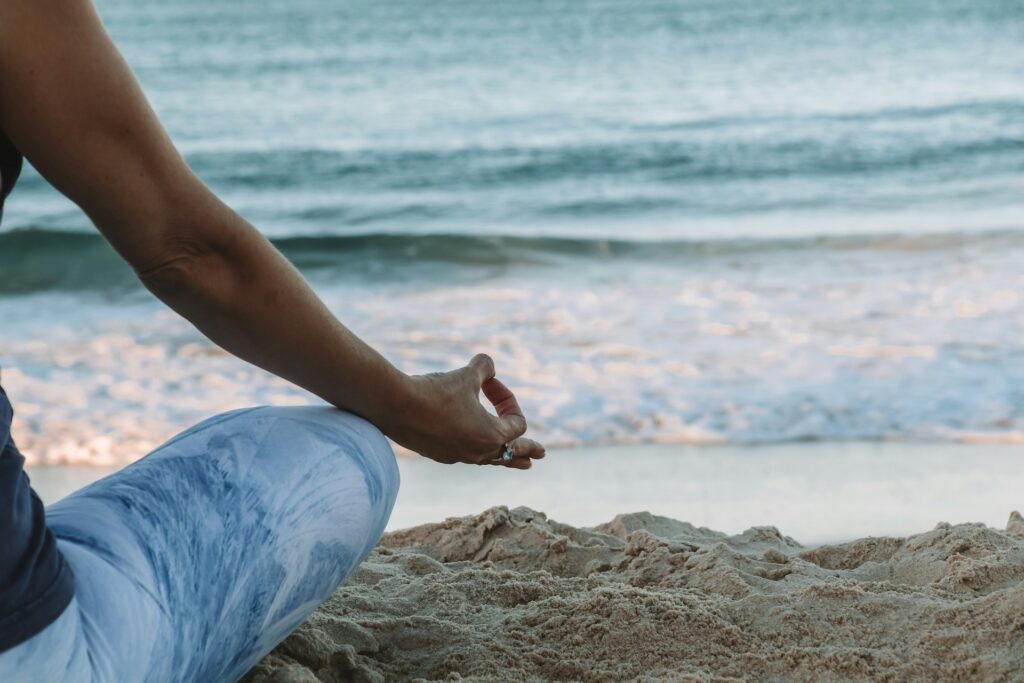In a world that constantly tells us to hustle harder, sleep less, and squeeze more into every waking minute, I’m here to share a revolutionary idea: the healthiest thing you might do today is stop.
Stop pushing. Stop scrolling. Stop believing that one more workout, one more productivity hack, or one more superfood will finally make you “healthy enough.”
The Exhaustion of More
Last month, I found myself wide awake at 2 AM—again. My Apple Watch had faithfully recorded my workout streak (43 days!), I’d meal-prepped like a champion, answered every work email before bed, and still managed to squeeze in a meditation session. By all measurable standards, I was winning at “healthy living.”
Yet there I was—exhausted, anxious, and ironically, feeling anything but healthy.
Sound familiar?
Many women I know—especially those of us in our 30s and beyond—are caught in this contradiction. We’ve mastered the art of doing all the right things, yet we feel increasingly depleted. We religiously track our steps while our stress levels soar. We optimize our morning routines while our joy diminishes.
When “Healthy” Becomes Harmful
Research suggests that our pursuit of optimal health can sometimes backfire. A 2023 survey by the American Psychological Association found that 76% of women reported moderate to high stress related to health optimization behaviors—tracking, measuring, and constantly improving their physical wellbeing.
“There’s a tipping point,” explains Dr. Maya Coleman, a psychologist specializing in women’s wellbeing. “When healthy habits become rigid requirements, they stop serving us and start depleting us. The constant pursuit of ‘better’ creates a stress response that undermines the very health benefits we’re seeking.”
This phenomenon has been dubbed “wellness fatigue”—the paradoxical state where our efforts to be healthier actually make us feel worse.
The Overlooked Power of Boundaries
The missing ingredient in many women’s wellness journeys isn’t another supplement or fitness class—it’s boundaries. Specifically, knowing when and how to stop.
Here’s what that might look like:
- Setting screen limits instead of step goals: Rather than obsessing over reaching 10,000 steps, what if we focused on reducing screen time after 8 PM?
- Creating “no” lists instead of “to-do” lists: What commitments, obligations, or self-imposed expectations can you release this week?
- Practicing presence instead of optimization: Can you enjoy your morning coffee without simultaneously listening to a productivity podcast?
- Embracing maintenance rather than constant improvement: What if some areas of your life were simply “good enough” as they are?
The Liberation of Less
Emma Chen, 37, discovered this principle after battling burnout despite following every wellness trend to the letter.
“I was doing everything ‘right’—intermittent fasting, HIIT workouts, meditation apps, sleep tracking—and I felt terrible,” she shares. “My turning point came when I got sick and physically couldn’t maintain my rigid health routines for a month. Surprisingly, I started feeling better emotionally and mentally.”
That unexpected reprieve led Emma to reassess her approach. “Now I ask myself, ‘What can I take away?’ rather than ‘What more should I add?’ It’s been transformative.”
Learning to Recognize Your “Enough Point”
Finding your personal “enough point” requires tuning into subtle signals that we’re often taught to override. Consider these questions:
- When do my healthy habits start generating anxiety rather than peace?
- What would happen if I did 20% less in areas where I’m overextending?
- Which wellness practices truly rejuvenate me versus those I do out of fear or obligation?
- Where am I confusing movement with progress?
For me, recognizing my “enough point” came through journaling about how different activities made me feel, not just what they helped me accomplish. I noticed patterns—how certain “healthy” practices left me feeling depleted rather than energized.
Setting Healthy Boundaries in Key Areas
With Technology
- Create tech-free zones or times in your home
- Unfollow accounts that trigger comparison or inadequacy
- Set up app limits for social media and news
With Work
- Define clear work hours and stick to them
- Practice saying “no” or “not now” to additional projects
- Take your full lunch break away from your desk
With Wellness Itself
- Limit health tracking to one or two meaningful metrics
- Schedule rest days with the same commitment as workout days
- Audit your supplements and routines—keep only what truly serves you
The Counterintuitive Science of Doing Less
Interestingly, research supports this “less is more” approach. A 2022 study in the Journal of Health Psychology found that participants who practiced moderate, flexible healthy behaviors reported greater wellbeing than those following rigid, intensive regimens.
Dr. Rachel Goldman, a behavioral psychologist, explains: “Our bodies and minds thrive on rhythms of effort and recovery. Most people overemphasize the effort part while neglecting the equally important recovery phase.”
This pattern has neurobiological roots. Constant striving activates our sympathetic nervous system (fight-or-flight), while moments of purposeful stopping allow our parasympathetic system (rest-and-digest) to engage—the state where our bodies actually do their best healing work.
A Gentle Path Forward
If you’re recognizing yourself in this article, here are some gentle ways to start practicing the art of “enough”:
- Create a “stop doing” list: Write down activities, commitments, or even thought patterns you’re ready to release.
- Introduce buffer time: Schedule 15-30 minutes between activities rather than back-to-back commitments.
- Designate one day as “maintenance only”: No new projects, improvements, or optimizations—just sustaining what already exists.
- Practice the pause: Before adding anything new to your life—a supplement, routine, or commitment—pause for 72 hours and ask, “Will this truly serve my wellbeing or add complexity?”
- Celebrate completion: Find satisfaction in finishing things rather than immediately starting the next challenge.
Finding Your Own Balance
The art of knowing when to stop is deeply personal. Your “enough point” might look different from mine or anyone else’s. The key is recognizing that boundaries aren’t limitations—they’re the foundations that make sustainable wellbeing possible.
As I’ve embraced this approach, I’ve noticed something surprising: my objective health markers have improved. My sleep is deeper, my stress hormones have decreased, and my joy has returned—not because I’m doing more, but because I’ve learned when to stop.
In our chase for optimal health, perhaps the most revolutionary act is not constant improvement, but mindful cessation—knowing not just how to run, but when to rest; not just how to grow, but when to be still.
Your journey to better health might not require adding anything new. Instead, it might begin with the simple, radical act of deciding what’s already enough.

Disclaimer: This article is for informational purposes only and does not constitute medical or professional advice. Always consult with qualified healthcare providers regarding any health concerns or before making significant changes to your diet, exercise, or wellness routines.



